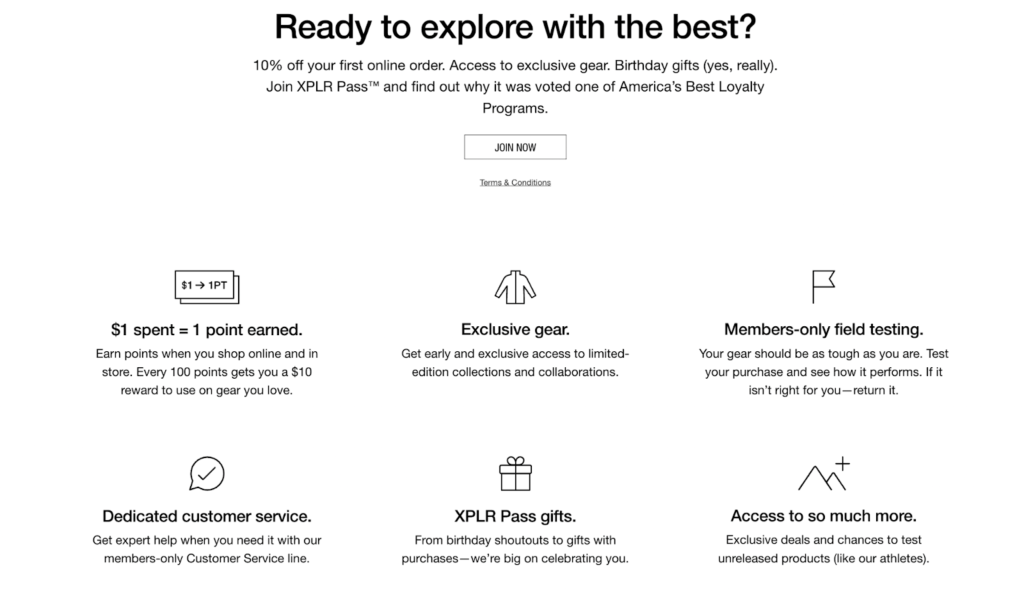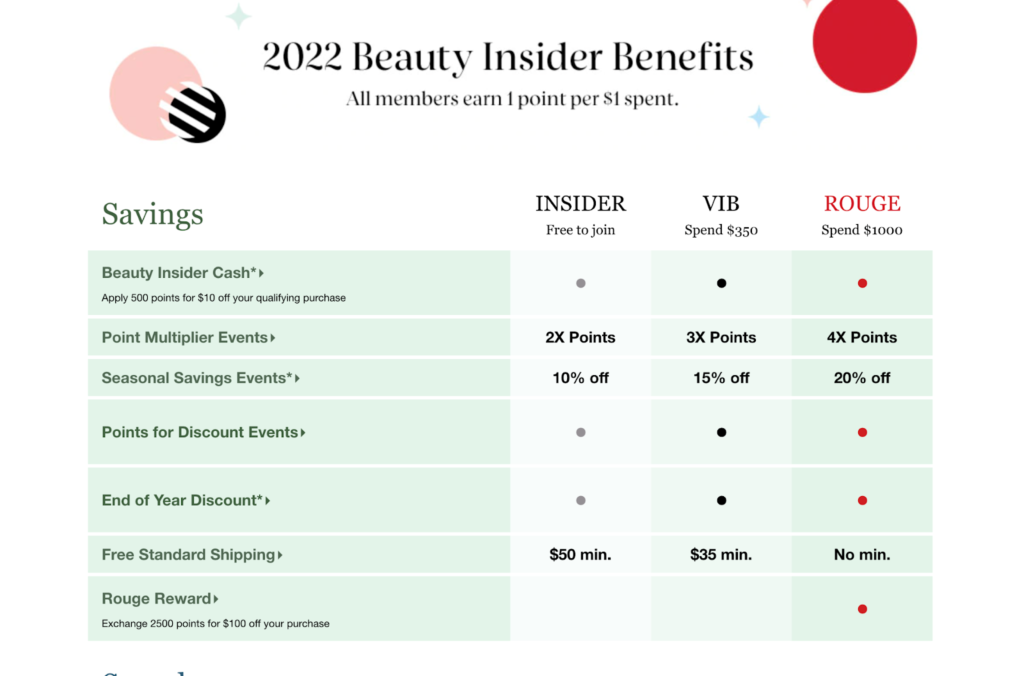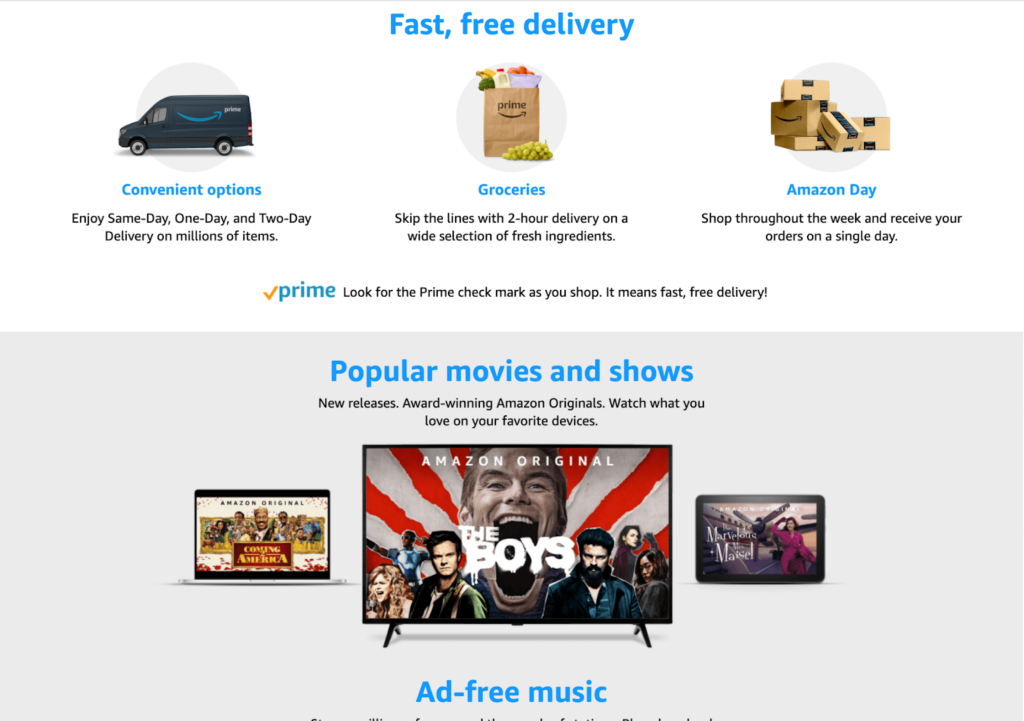
How To Build Ecommerce Loyalty Programs That Improve Customer Retention & Experience
This is your guide to ecommerce loyalty programs that improve the shopping experience and boost your customer lifetime value. Read on to learn how to build yours.
Key Takeaways
By the end of this article, you should have the knowledge and resources to “check the box” in these areas…
- How to turn your one time customers into brand loyalists through an engaging loyalty program
- Understand the importance of loyalty programs in a growing ecommerce business
- The structure and format of winning ecommerce loyalty programs from top brands
The surge in online shopping, the rise of small ecommerce businesses, and the constant change of consumer preferences are just a few of the reasons ecommerce sales landed at a whopping $4.9 trillion in 2021.
And the industry isn’t stopping there with sales expected to rise to $7.4 trillion by 2025.
While these numbers promise a bright future for ecommerce businesses, they also pose a competitive threat.
Along with growing sales, there are a growing number of ecommerce businesses. So, it’s more important than ever to provide an excellent customer experience that converts and retains.
While sales and discounts are the go to strategies for brands looking to attract lots of customers fast, these are also the tactics that decrease your perceived brand value and total revenue (we could go on and on about why discounting is bad for your brand).
What’s better?
A consumer-centric ecommerce loyalty program—a must-have for ecommerce businesses. The loyalty programs of today don’t just focus on small incentives and discounts, but delve deeper into experiential rewards like personalized gifts and upgrades that keep the customers happy and returning to the brand.
Why ecommerce loyalty programs are important for your business
With compelling rewards, discounts, personalized offers, and exclusive deals, it’s no surprise that 84% of customers say they’re more likely to engage with a brand with a loyalty program.
Simply put, ecommerce companies with loyalty programs are offering a better experience for shoppers. And because they are building a better experience for their customers, they’re also improving key business metrics like Average Order Value and Customer Lifetime Value (CLV).
When you invest in shopping and brand experiences that retain customers, it pays off.
Here are just a few of the benefits your business might see from offering an ecommerce loyalty program:
- Understand what your customers want and retain them: Loyalty programs will give you first-party data about what customers like, don’t like, and what they’re most likely to engage with. You can use this data to provide experiences better suited to their needs and boost retention in the process.
- Increase customer lifetime value (CLV): A well-designed loyalty program can create a customer experience that keeps shoppers returning to your site, therefore increasing CLV. It gives them new reasons to return and continue shopping.
CLV is crucial to have a thriving ecommerce business. Having a decent to high CLV allows you to reinvest those higher margin earnings into driving new customers who later convert into loyal customers and drive the flywheel.
-Jon MacDonald, CEO, The Good
- Turn customers into brand advocates and reach new audiences: Influencer marketing is a superpower in the ecommerce industry because 49% of consumers depend on influencer recommendations to make purchase decisions. However, turning existing customers into advocates is even better. With a loyalty program, you can easily identify your best customers through data and purchase history. Offer incentives for referring their friends or group gift ideas when they shop together or meet certain thresholds. You’ve kept a brand loyalist happy and gained a new customer.
How to implement a loyalty program that converts
Over 52% of customers will join a loyalty program for a brand they regularly buy from. How can you leverage that engaged audience?
Here’s a step-by-step guide to building a loyalty program that drives results:
1. Define your goals and conduct customer research
No marketing strategy can be successful without objectives and goals to define the direction of your project. So, begin by defining your goals for the loyalty program.
Try setting SMART goals that are specific, measurable, achievable, realistic and timely. For example, instead of saying, “We want to increase customer retention,” say, “We want to increase customer retention by 7% by the end of the 3rd quarter.”
Once you have your goals established, turn your thinking to your customer base.
To design a loyalty program that provides a great experience, you must understand and address the customers’ needs and preferences.
If your loyalty program doesn’t appeal to your audience, it will likely end up as a bust. The whole point of the program is to entice customers to keep coming back, so if you fail to tailor the rewards to your audience’s needs, they won’t engage. Unattainable rewards will also quickly turn off your customers, and could actually increase turnover through frustration and annoyance. So, it’s important to understand the best ways to engage and retain them through data-driven practices.
-Co-Owner and Chief Marketing Officer, Nolah Mattress
Here’s how you can gauge the customers’ interests, needs and preferences:
- Ensure you have a CRM system in place, along with channels that help you gather customer contact information like lead magnets, newsletters, checkout processes, inventory waitlist, etc. This will allow you to maintain an opt-in customer list that you can use to carry out research.
- Use customer behavior tools like Hotjar’s heatmaps, session recordings, and exit-intent surveys to understand how your customers currently interact with your site and to find inspiration for your loyalty program.
- Create a customer research survey and attach an incentive like first access to the loyalty program to gather more information about what your customers might value in your loyalty program.
Enjoying this article?
Subscribe to our newsletter, Good Question, to get insights like this sent straight to your inbox every week.
2. Choose the best loyalty program for your business
Once your goals are established and customer research has been analyzed, your next step is to decide on the format of your program.
Here are a few of the options, and accompanying examples, to get the creative juices flowing:
Point-based
If you visit Starbucks regularly, you probably already know what a point-based loyalty program looks like.
It allows customers to collect loyalty points when they perform specific actions like making a purchase or sharing about their experience with the brand on social media. At different milestones or point values, participants unlock rewards.
Most points programs are free and have a low barrier to entry. While this attracts more signups it usually means point accumulation – and rewards redemption – takes time.
The XPLR Pass by North Face, an activewear and outdoor gear brand, is an excellent example of a point-based loyalty program.
It was voted one of America’s best loyalty programs and offers a point on every dollar spent. When customers collect 100 points, they get a $10 reward.
ButBut what makes the program really special is the way they tailor additional rewards to the interests of their members. For example, among more common rewards, participants also get early and exclusive access to gear and special opportunities to field test equipment and return it if it doesn’t meet their outdoor exploration standards.
North Face knows that their most loyal shoppers are dedicated to spending time outside… and they want the best gear to do it. So XPLR pass works to make that experience just a little bit better.

Tiered program
This program type rewards customers differently based on their loyalty to the brand.
As customers spend more money and complete specific tasks, they move up the tiered ladder. The higher they go, the more exclusive and bigger benefits they enjoy.
Sephora’s Beauty Insider is a successful tiered loyalty program. Customers earn points on every dollar spent and move between three tiers—Insiders, VIB and Rouge.
Sephora still allows non-spenders to opt-in to the program for exclusive discounts and deals. But as loyal beauty insiders spend more, they’re rewarded with better savings, discounts, free shipping, and more.

Paid/subscription program
The paid loyalty program charges a one-time fee that grants customers access to additional perks. Similarly, in a subscription-based loyalty program, customers are charged a recurring monthly/quarter fee instead of a one-time fee.
This program works because:
- You’re happy that the membership fee keeps customers loyal. For example, why would they order from a new food delivery app if they pay a monthly fee and get free delivery with your app that has a loyalty program?
- Your customer is happy that the fee is cheaper than what they would spend on multiple purchases. For your loyal customers, the amount they’re spending is nominal compared to what they would spend without the accompanying rewards.
Amazon Prime is a great example of this. A Prime membership offers free two-day delivery on your orders. Currently, 148.6 million Prime members in the US alone pay $14.99 per month, registering over $25 billion in subscription fees.

Partner or community based program
A slightly complex yet interesting loyalty program involves partnerships with similar brands to offer combined incentives and rewards. For example, a clothing brand can partner with an accessories or footwear brand to provide discounted product bundles and other incentives as part of the loyalty program.
Similarly, you can build a community-based program where the brand connects customers with other like-minded customers who can fulfill and complete tasks together to unlock incentives while networking.
3. Decide your rewarding criteria
Your loyalty program will fall flat if you don’t decide which customer behaviors you want to reward, your rewarding criteria, and what kind of benefits you’ll offer.
While you may feel like you need big and complicated rewards to incentivize customers, that’s hardly ever true. It’s best to start with a simple reward and simple criteria – and then add complexity as you grow the program.
“The Fragrance World’s loyalty scheme is quite new, however we’ve got great returns on the incentive to invite friends. A customer refers a friend, and both get £3 off their next order. We have customers who have referred over 10 friends with an AOV of £25 (£250), this could cost us around £50-£70 for PPC but was cheaper to acquire these customers through the loyalty scheme by offering a small incentive.”
-Katie Johnson, Founder, The Fragrance World
Here are some actions you can reward, apart from a purchase:
- Referring a friend
- Sharing about your brand on social media
- Signing up for the newsletter
- Giving a product review
- Customer anniversary or birthday
- Reaching a certain threshold in purchases
It’s also important that you don’t just chase discounts and free shipping as the only incentives in ecommerce. Go for experiential rewards like one round of free clothing alterations, free dry cleaning service, pick and drop for a brand event, sampling for a new product launch, etc.
You want to incentivize your customers not just by saving money but also by improving their brand perception and shopping experience, so they continue buying from you.
4. Invest in a customer loyalty software
Managing a customer loyalty program across countries, currencies, and devices isn’t an easy feat. You need a solid ecommerce customer loyalty software to organize and streamline your process for customers and your employees.
These tools record purchases—specifically made by loyalty program members—calculates their point accumulation, allows them to buy and redeem those points, and offers interactive tools to make the process even more fun for the customers. Yotpo is a good option to start your exploration or check out G2s customer retention software resource.
Finding the right software will help you put the process on auto-pilot, so you can focus on delivering the experience.
As a bonus, this software will also give you insights around repeat purchases, your best customers, most popular incentives, and feedback so you can iterate on your loyalty program.
5. Begin experimenting and tweaking
Once you’ve got your ecommerce loyalty program up and running, it’s important to check your progress and how customers respond to your rewards and incentives system.
You can use your loyalty program software to gather data and combine it with your online store data to assess what’s working and what’s not. While there are many metrics you can evaluate, here are three to start with:
- Customer churn rate: The rate at which people stop being your customers is the churn rate. If you’re running a paid loyalty program, you also want to look at the rate at which customers stop renewing or downgrade their subscription with you. This will tell you if your loyalty program effectively retains customers or needs improvement.
- Net Promoter Score (NPS): This is a customer experience metric that suggests how likely a customer is to recommend your brand on a scale of 1-10.
- Customer Lifetime Value (CLV): CLV is one of the most important factors determining loyalty program success. It tells you how much customers are spending, how frequently they’re shopping and how long they stay in your program. It indicates the longevity of a customer relationship, and a high CLV suggests customer satisfaction and retention.
Ecommerce loyalty programs are here to stay
There’s no one-size-fits-all approach to build an ecommerce loyalty program that drives more sales. It’s important to tailor your loyalty program to your customers’ needs with personalized experiences that bring them back for repeat purchases.
Start small, keep a close eye on your data, and iterate—all while placing the customer at the center of your program.
Enjoying this article?
Subscribe to our newsletter, Good Question, to get insights like this sent straight to your inbox every week.

About the Author
Caroline Appert
Caroline Appert is the Director of Marketing at The Good. She has proven success in crafting marketing strategies and executing revenue-boosting campaigns for companies in a diverse set of industries.